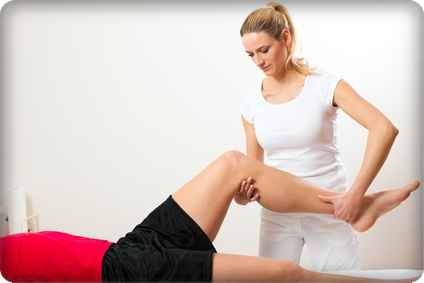Tips for Prevention of Shin Splints:
- Individuals with flat feet should wear well-padded shoes.
- Warming up the limbs and body followed by stretching is recommended.
- Wear a neoprene sleeve to keep the lower leg warm
- At the first sign of shin pain, discontinue the workout.
- Avoid running on concrete and other hard surfaces.
- Develop the habit of stretching periodically throughout the day.
- Lose weight if you are overweight to relieve load on the hip, knee and shin.
Diagnosis of Shin Splints:
The history of the event that triggered the pain is an important clue. A clinical assessment that includes gentle pressure on the shin area and a variety of special tests will be conducted by the physical therapist. Stress fractures, compartment syndrome, nerve entrapment and popliteal artery entrapment are a few of the conditions that must be considered.
 Treatment of Shin Splints:
Treatment of Shin Splints:
Foundations of treatment include ice and rest.
Gait and footwear analysis
An analysis of how a person walks and runs is an important part of treatment. The wrong mechanism of walking can transmit a great deal of force through the shin to the knee and hip. In such situations, physical therapists will correct gait patterns and recommend footwear with shock absorbing capacity.
Muscle stretches and strengthening
The tibial and peroneal muscles are attached to the shin and must be stretched adequately before any form of exercise. Physical therapy includes various stretches of the foot that will help stretch and warm up these muscles. Strengthening the damaged muscles can also help.
Activity modification
Physical therapists may suggest alternative activities to minimize stress on the shinbones. These can include swimming and cycling.
Range of motion exercises
Exercises for the hip, knee, ankle and foot improve blood circulation, reduce inflammation and relieve pain.
Arch support
The absence or collapse of a normal foot arch can lead to shin splints. Physical therapists will recommend appropriate orthotics that can be custom made for the patient and provide the appropriate amount of arch support.